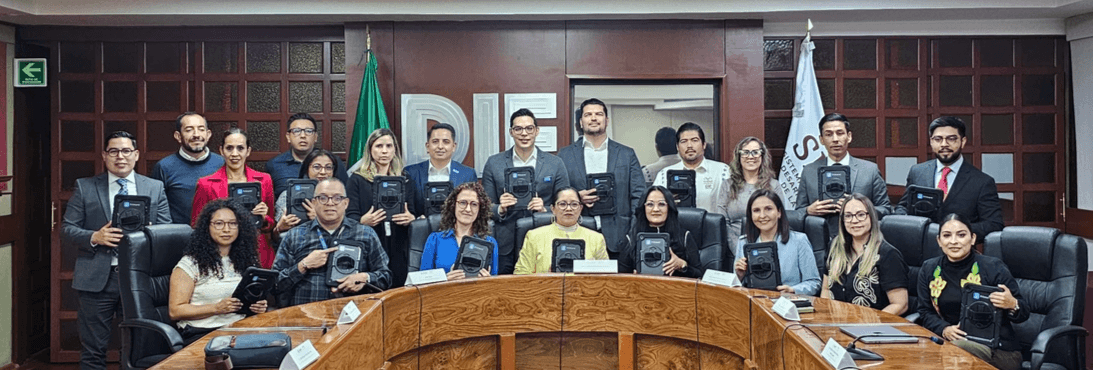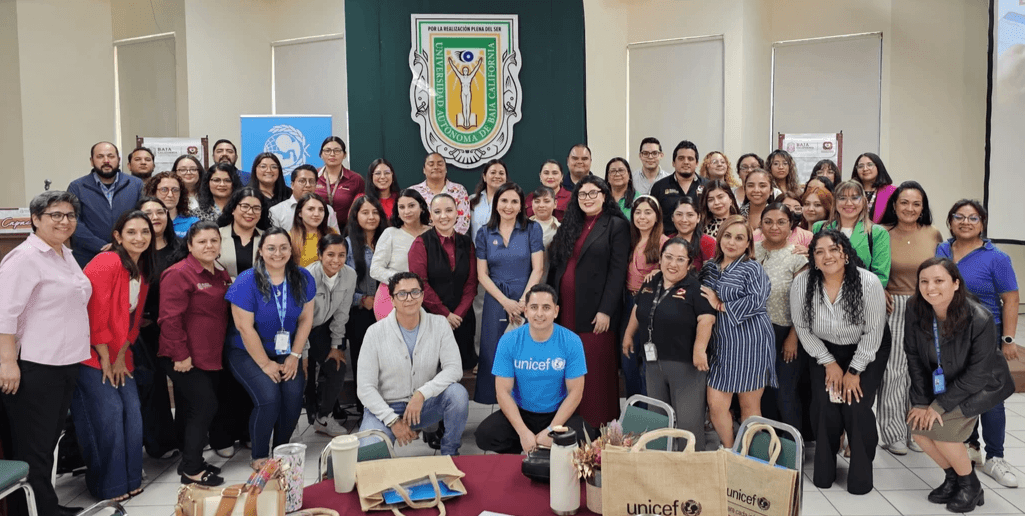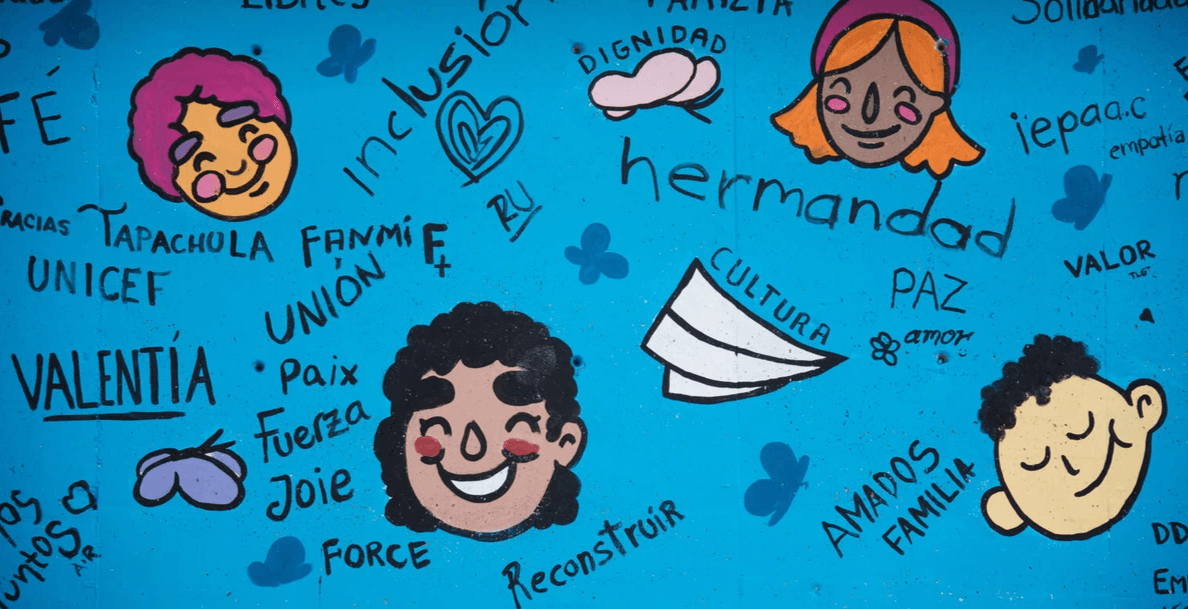CPIMS+ Rollout in Mexico: A new era for child protection
In a significant stride towards enhancing child protection, Mexico has recently rolled out the CPIMS+, a modern web-based platform designed to facilitate case management for vulnerable children. This initiative, supported by UNICEF, aims to strengthen the protection of children and adolescents across the country.
The CPIMS+ is a key component of the new National Case Management Model (MOGEC), which was introduced by the National System for the Integral Development of the Family (DIF Nacional) on June 26, 2025. This model standardizes processes, systematizes best practices, and promotes a child-centered approach through the Procuradurías de Protección de Niñas, Niños y Adolescentes (PPNNA) across Mexico.
Strengthening Case Management
The CPIMS+ is designed to enhance case management through modern information management technology. It offers intuitive digital forms and clear workflows to assist with documenting case management processes, from identification and registration to assessment, case planning, referrals, tracking service provision, and case closure. This system can be easily configured to reflect different standard operating procedures (SOPs), roles, and programs in any language, making it a versatile tool for child protection agencies.

©Ernesto Baca (2025).Teams from SNDIF, Child Protection Authorities and UNICEF, during the official launch of Primero in Mexico.
One of the standout features of the CPIMS+ is its ability to work both online and offline. This ensures that case workers can access and update records even in areas with limited connectivity, thereby preventing data loss and ensuring continuity of care. The system's sophisticated matching technology also aids in family tracing and reunification by pairing tracing requests made by caregivers with records of children registered as missing, separated, or unaccompanied.
A Collaborative Effort
The rollout of the CPIMS+ in Mexico is a collaborative effort involving various stakeholders. The model was developed with technical support from UNICEF and in collaboration with the PPNNA of different states. This partnership aims to strengthen the operational capacity of the PPNNA, ensuring more effective, ethical, and coordinated responses to child protection cases.
The MOGEC provides a structured guide with minimum guidelines for the actions of multidisciplinary teams, which include professionals from social work, psychology, and law. It also promotes coordination between different levels of government and institutions involved in child protection, ensuring a more unified and effective approach.

©Silvia Valdez (2025). Child Protection Authorities from Chiapas participating in their training on the MOGEC and CPIMS+/Primero.
Addressing vulnerabilities
The CPIMS+ and the MOGEC are designed to address the specific vulnerabilities of children and adolescents in Mexico. The model includes recommendations for handling cases involving children in particularly vulnerable situations, such as those in human mobility, without parental care, at risk of recruitment by organized crime, or victims of discrimination based on sexual orientation or gender identity.
Moreover, the model recognizes the need to protect frontline workers and includes guidelines for the self-care of professional teams. This holistic approach ensures that both the children and the professionals working to protect them are supported.
Critical Child Protection Issues in Mexico
Mexico faces several critical child protection issues that the CPIMS+ and MOGEC aim to address:
Violence, abuse, and exploitation: According to the 2022 National Health and Nutrition Survey (ENSANUT), half of all children in Mexico have been subjected to violent discipline at home, including physical punishment and psychological aggression. The 2021 National Survey on the Dynamics of Household Relationships (ENDIREH) revealed that 53% of adolescent girls aged 15–17 have experienced sexual violence, while one in five women over 15 have suffered intimate partner violence. These data reflect deeply rooted patterns of violence that permeate homes and communities.

©Luis Kelly/UNICEF. Mother and son at the shelter for migrant families of Embajadores de Jesús, Tijuana, Baja California
Armed violence: Insecurity and organized crime also have a devastating impact on children. In 2023 alone, 898 children were victims of homicide, over 7,200 were reported missing, and 382 were identified as victims of trafficking (SESNSP, RNPDNO). Many children live under constant threat, face forced displacement, or risk recruitment by criminal groups, with immediate and long-term consequences for their safety, wellbeing, and future.
Child labor: The 2022 National Child Labor Survey (ENTI) estimated 3.7 million working children, of whom 2.1 million were engaged in hazardous or prohibited activities. This not only exposes them to risks and exhaustion but also deprives them of education and leisure essential for healthy development.
Children deprived of parental care: The 2020 National Census reported 21,973 children living in residential care institutions, with more than 4,200 remaining for over six years. This highlights the lack of stable family-based alternatives and the systemic challenges in fulfilling every child’s right to grow up in a safe and nurturing family environment.
Children on the move: Migration adds further complexity. In 2023, the Migration Policy Unit (SEGOB) identified 113,542 events of children in irregular status, including 6,732 unaccompanied. This places enormous pressure on child protection authorities in border and transit states, who must determine the best interests of each child and provide urgent protective measures.
Child Protection Authority in Mexico
The child protection authority in Mexico is primarily managed by the National System for the Integral Development of the Family (DIF Nacional). DIF Nacional promotes the rights of children in accordance with the U.N. Convention on the Rights of the Child, which Mexico ratified in 1990. The Procuradurías de Protección de Niñas, Niños y Adolescentes (PPNNA) operate under DIF Nacional or their state-level counterparts and are responsible for implementing child protection policies and providing legal representation to children involved in child protective proceedings across the country. An exception exists in three states—Coahuila, Colima, and Guanajuato—where the Procuradurías are established as autonomous institutions, independent from the local DIF.

Child Protection Authorities from Baja California participating in their training on the National Case Management Model and Primero.
Mexico is composed of 32 states , each of which has its own Constitution, laws, decrees, and regulations. While state laws governing child protective proceedings may vary slightly by jurisdiction, they are generally modeled on Mexico’s national laws. This structure ensures that child protection efforts are coordinated and standardized across the country, promoting a unified approach to safeguarding the rights and well-being of children and adolescents.
A step towards a brighter future
The implementation of the CPIMS+ in Mexico represents a significant step towards a more coordinated, operational, and child-centered protection system. By leveraging modern technology and fostering collaboration among various stakeholders, Mexico is making strides in ensuring the rights and well-being of its children and adolescents.
This rollout is not just about adopting a new system; it is about transforming the way child protection is managed in Mexico. With the CPIMS+, the country is better equipped to provide timely and effective responses to child protection cases, ensuring that no child is left without the care and support they need.

@Luis Kelly/UNICEF
As Mexico continues to implement the CPIMS+ and the MOGEC, it sets a precedent for other countries to follow. This initiative highlights the importance of modern technology, collaboration, and a child-centered approach in building a robust child protection system. The future looks promising for the children of Mexico, thanks to these innovative and comprehensive efforts.

